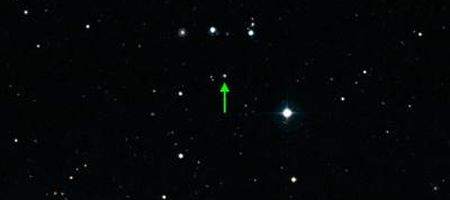A team of European astronomers have discovered a star that by rights shouldn’t exist – it’s simply not dense enough for current models to explain its formation.

SDSS J102915+172927, a faint star in the constellation of Leo, has been found to have the lowest amount of elements heavier than helium of all stars yet studied. It has a mass smaller than that of the Sun and is probably more than 13 billion years old.
“A widely accepted theory predicts that stars like this, with low mass and extremely low quantities of metals, shouldn’t exist because the clouds of material from which they formed could never have condensed,” says Elisabetta Caffau of the Zentrum fur Astronomie der Universitat Heidelberg and the Observatoire de Paris.
“It was surprising to find, for the first time, a star in this ‘forbidden zone’, and it means we may have to revisit some of the star formation models.”
The team analysed the properties of the star using the X-shooter and UVES instruments on the VLT, and found that the proportion of ‘metals’ – elements heavier than helium – was more than 20,000 times smaller than that of the Sun.
“The star is faint, and so metal-poor that we could only detect the signature of one element heavier than helium — calcium — in our first observations,” says Piercarlo Bonifacio of the Observatoire de Paris.
Cosmologists believe that the lightest chemical elements — hydrogen and helium — were created shortly after the Big Bang, together with some lithium, while almost all other elements were formed later in stars.
Supernovae spread this material out into the interstellar medium, making it richer in metals. New stars formed from this enriched medium therefore contain more metals than older stars.
“The star we have studied is extremely metal-poor, meaning it is very primitive. It could be one of the oldest stars ever found,” adds Lorenzo Monaco of ESO.
Also surprising was the lack of lithium in SDSS J102915+172927. Such an old star should have a composition similar to that of the universe shortly after the Big Bang, plus a few more metals. But the team found that the proportion of lithium in the star was at least fifty times less than expected.
“It is a mystery how the lithium that formed just after the beginning of the Universe was destroyed in this star.” Bonifacio added.
The researchers say that the weird star may not be unique. “We have identified several more candidate stars that might have metal levels similar to, or even lower than, those in SDSS J102915+172927. We are now planning to observe them with the VLT to see if this is the case,” says Caffau.






